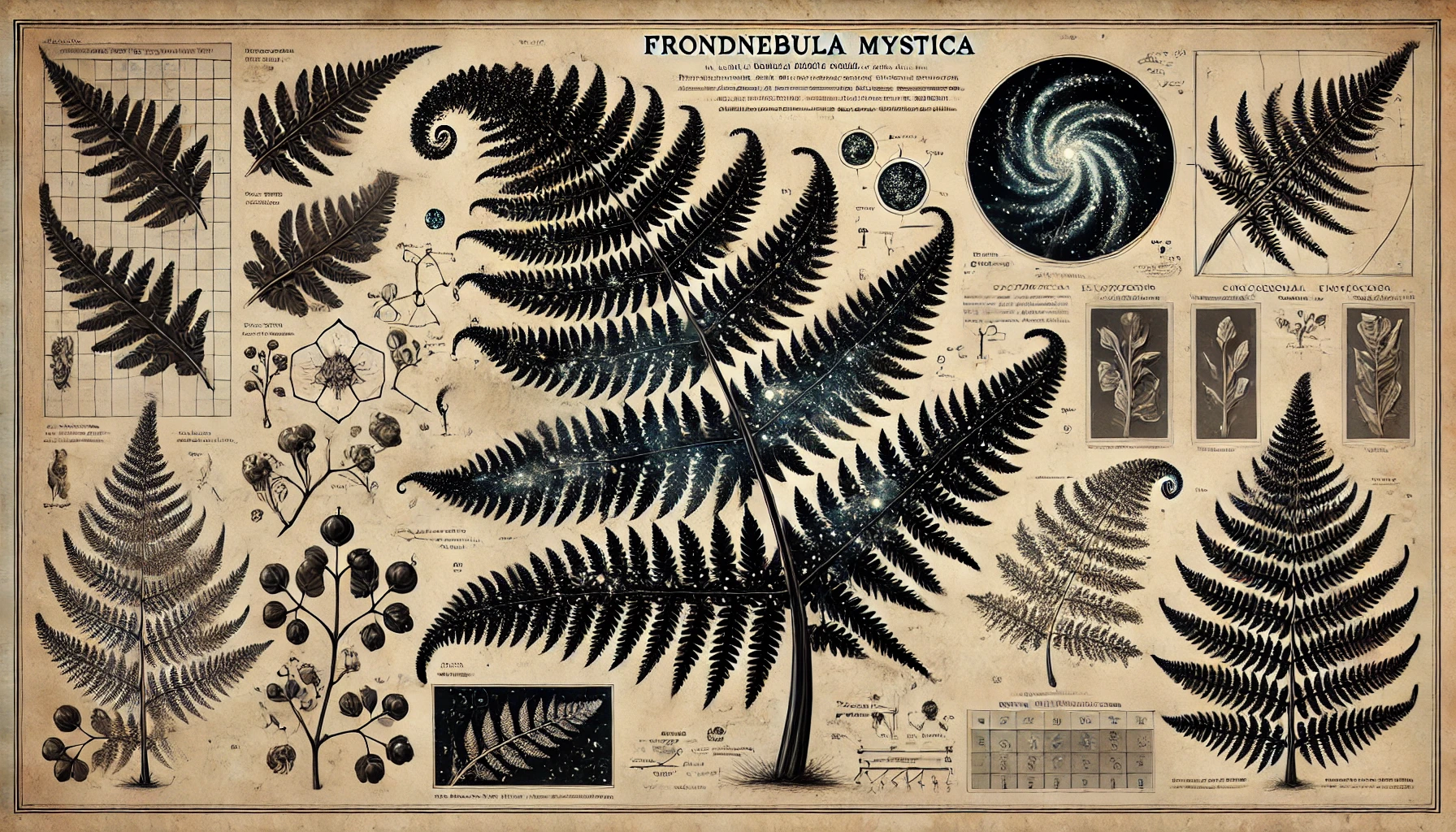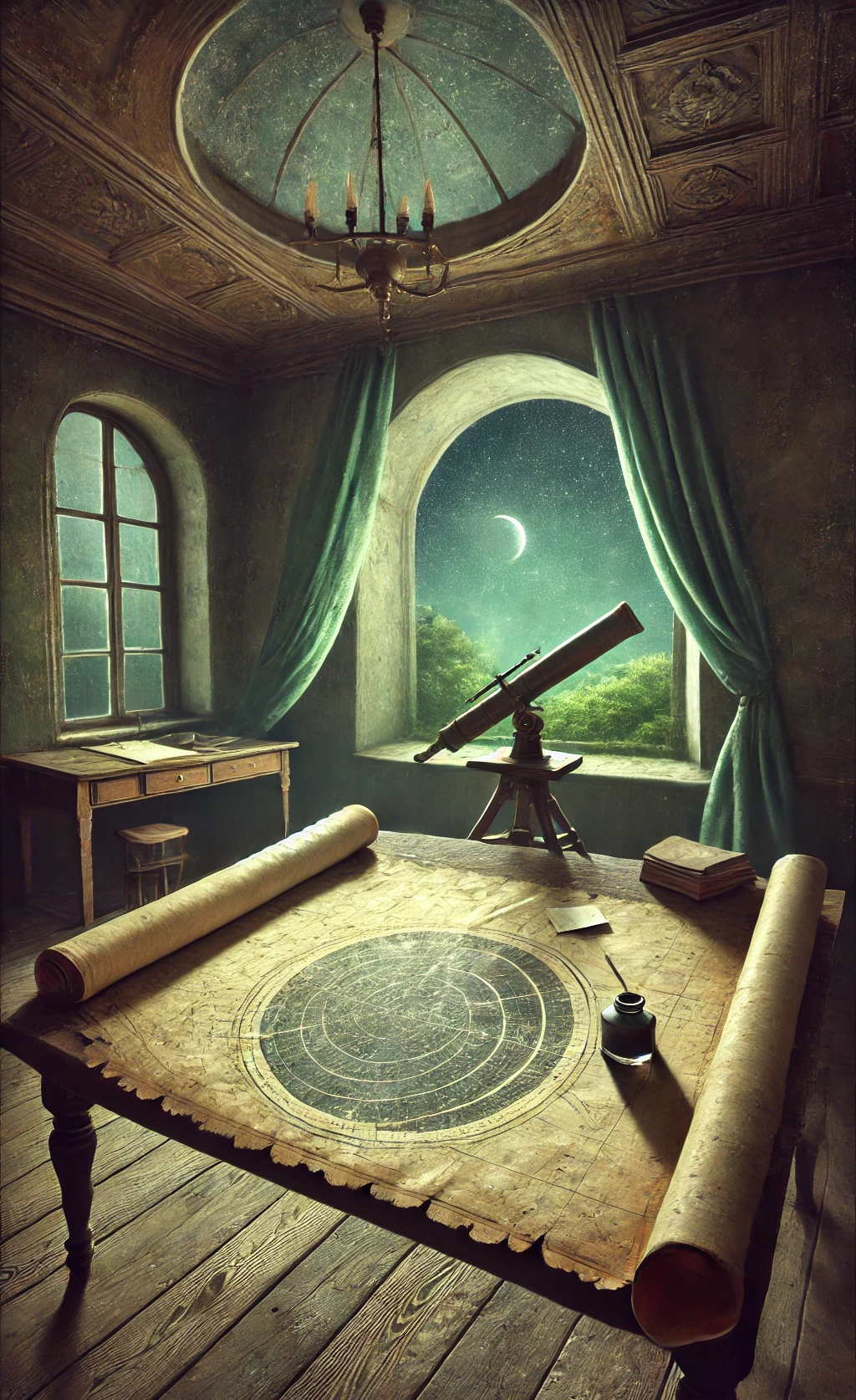Phenomenon Profile
Nebulafern is a sprawling, low-growing plant whose fronds stretch across shadowed ground like the arms of a resting constellation. Each frond bears a smoky black hue, veined with shifting whorls that resemble distant galaxies seen through fog. At rest, the plant appears still and inert—but during twilight, its leaves have been witnessed rising in gentle pulses, as if listening to celestial rhythms no ear can hear. Scattered across each frond are minute points of natural bioluminescence, which pulse subtly in no apparent pattern. Some researchers describe it as “the slow breathing of the stars.” When fully spread, a single Nebulafern may cover up to six feet, its presence often unnoticed until light strikes it from the correct angle—then it shimmers like dew-laced velvet.Origin and Emergence
Nebulafern does not hide underground like Galaxyroot. It grows in plain sight, yet never in ordinary places. It emerges only during lunar eclipses, in regions touched by celestial disruption: the base of meteorite craters, within collapsed druidic stone circles, or in the shadows of anomalies—where tree lines curve unnaturally, and moss never grows. It anchors itself in thin soil layered with cosmic sediment, and no cultivated attempt to reproduce it has ever succeeded. Its spores are contained in translucent, ether-like pods, which only release when exposed to the Devouring Mist—a phenomenon rarely witnessed. Some druids suggest that the plant does not grow from the earth at all, but from cracks in the wave of Apanórion, that open just long enough to let it root in this world.Interaction and Risk
Unlike its subterranean kin, Nebulafern can be approached without ritual—though not without consequence. The plant emits no audible sound, but prolonged exposure causes a distinct shift in perception: the air seems deeper, one’s thoughts stretch outward, and the body feels distant from itself. Those who linger too long often report:- Profound time loss (minutes, even hours).
- Sudden emotional detachment.
- Visions of astral architecture, often non-Euclidean and silent.
Usage and Preparation
Once gathered under the correct alignment, the fronds must be dried by starlight alone, shielded from direct flame or alchemical heat. Once desiccated, they are ground into an iridescent grey powder, often stored in lead-lined glass vials etched with celestial warding symbols. When mixed into tea, elixirs, or smoked with binding herbs, the powder aligns the user’s thoughts with cosmic resonance—not expanding consciousness, but tuning it. The result is an unnatural sense of:- Forethought.
- Lucid intuition.
- Pattern recognition on a scale that often defies human logic.
Records and Rumors
Elven glyphwork describing Nebulafern depicts it not as a plant, but as “a veil woven from stellar silence.” They note that the plant “thrives where the sky once fell,” and may indicate the soft footprints of higher intelligences. Among druids, Nebulafern is used more frequently than Galaxyroot, but never casually. The Druids enforces a rule: no one may steep Nebulafern twice within a single cycle of moons. The reason, now forgotten, is recorded only as:“To return too soon is to forget what it means to stay.” There are whispered stories that Hollowborn will not approach it.
“The fern doesn’t ask. It remembers you first.”



Comments